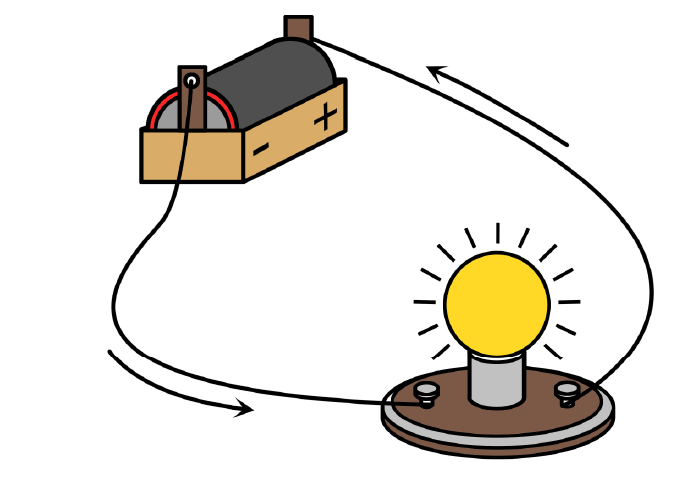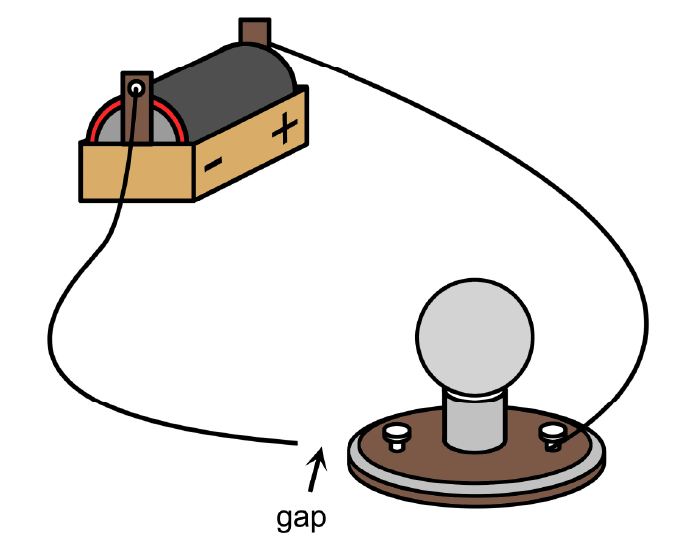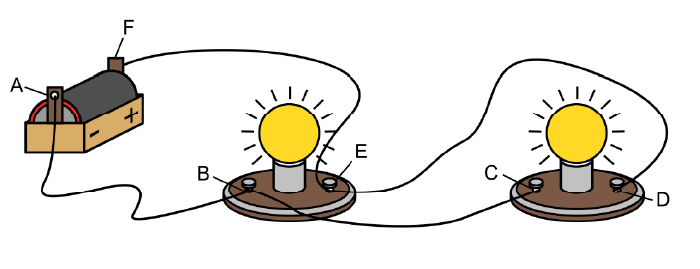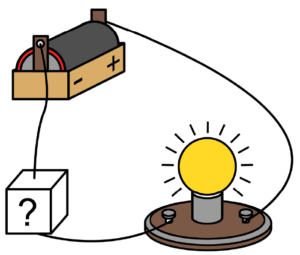Electrical Circuits
Vocabulary
Read the vocabulary terms to understand the reading better.
Circuit
A circuit is a closed path that allows electricity to flow from one point to another.
Conductor
A conductor is a material or substance that allows electricity to flow through it.
Electrical Current
An electrical current is the flow of electrons from one section of a circuit to another.
Load
A load is a device, such as a light bulb, that receives electricity from a circuit or power source.
Parallel Circuit
A parallel circuit is a circuit that has more than one path for the electric current to flow along, for example, a light that has a switch at each end of a hallway.
Series Circuit
A series circuit is a circuit that connects several loads, such as in a string of lights.
What Is a Circuit?
A circuit is a path that electricity travels along. Here are the parts of a simple circuit:
Part |
What It Does |
Example |
Power source |
provides electricity |
battery |
Conductor |
carries the electrical current |
metal wire |
Load |
uses electricity to do something useful |
motor |
The purpose of a circuit is to provide electricity to the load. If there is a gap anywhere in the circuit, the load will not work. The electric current will not be able to flow through the load. The load in the diagram is a light bulb. If there is a gap in the circuit, the light bulb will not light.
In the simple circuit, the electric current flows from the battery. The current flows through the light bulb, and back into the battery. The ends of the two wires are connected to the battery and to the light bulb. There are no gaps in the circuit, so the circuit is complete. The purpose of a circuit is to provide electricity to the load. If there is a gap anywhere in the circuit, the load will not work. The electric current will not be able to flow through the load. The load in the diagram is a light bulb. If there is a gap in the circuit, the light bulb will not light.


What Is a Series Circuit?
A series circuit connects several loads. There is only one path for the electric current to flow along.

What Is a Parallel Circuit?
A parallel circuit provides more than one path for the electric current to flow on.
Use your finger to trace these paths on the diagram:

Path 1: A → B → E → F
Path 2: A → B → C → D → E → F
In a parallel circuit, the electric current flows through all the possible paths. This happens only if each path is complete. In the circuit above, some of the current follows Path 1 and some follows Path 2. Both light bulbs light up.
To learn more about electrical circuits, watch the video by SciShow Kids on YouTube.
Show What You Know!
Complete some questions about the reading selection by clicking “Begin Questions” below.











